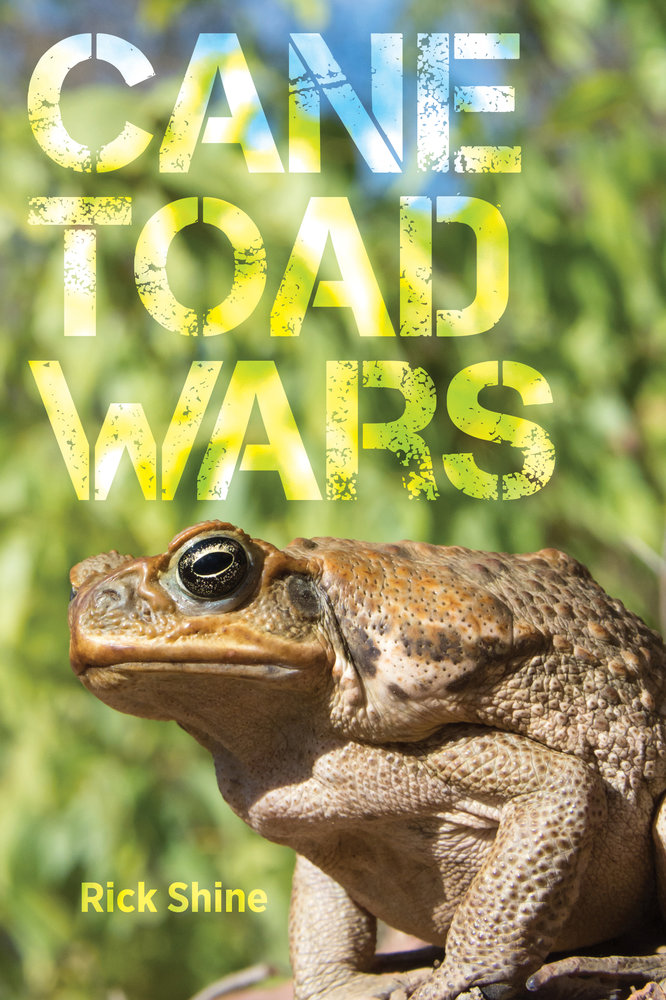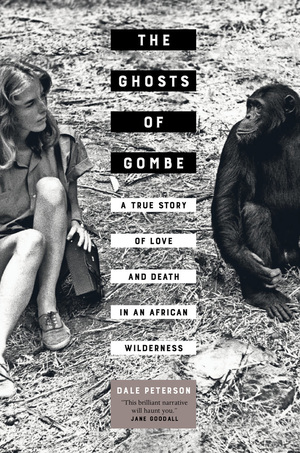I realize that nature and science may not seem like the ideal topics for casual beach and campsite reading. These three books may change your mind.
All three feature great storytelling and wonderful writing. All offer surprising twists and intriguing insights. All will keep you turning the pages. And you’ll learn something new about the natural world in the process.
So settle in for science writing at its best. And feel free to leave your own summer book suggestions in the comments.
-
Cane Toad Wars
By Rick Shine (University of California Press)

Few invasive species have inhabited public nightmares like the cane toad. In its spread across Australia, this large amphibian has left nothing but the carnage of dead native animals. Or at least that’s the common narrative.
Scientist Rick Shine conducted a long-running snake research program in Australia’s Northern Territory. And cane toads were approaching. He realized that there was nothing he could do to stop them, and that they would likely wipe out the snakes he was studying. Instead of giving in to despair, he realized he has a remarkable opportunity: to study the impacts of cane toads firsthand. Since they already had gathered a lot of baseline data, his research team was well poised to study the invasion in all its gory detail.
Suffice to say the story doesn’t play out quite as they expect. Yes, cane toads did devastate some species of native animals, but they never brought the mass destruction predicted by the mainstream press.
The best science writing includes a quest for answers and also challenges perceptions. This book does both, in a most entertaining manner. Shine is a natural storyteller, and he captures the science, the people involved and the toads themselves with a style that keeps you reading, wanting to know what happens next.
A lot of this book is about human perceptions of invasive species, most notably the concerned citizens who advocate for “toad busting.” Toad busting groups would gather and kill lots of toads, but Shine found no evidence that such activities affected the output.
“My initial perspective was militaristic,” Shine writes. “We were studying an outsider – an alien being—an enemy we needed to crush. It was a crusade. But in time I came to embrace a simpler view, stripped of emotion. We were studying a giant amphibian, of interest in its own right as well as for its devastating impacts on Australian ecosystems.”
Shine found that anti-toad hysteria actually got in the way of practical solutions, and his research focused on innovative ways to protect the most affected native species (including aversion training using “toad sasusages”) and measures that could make human habitats less amenable to toads.
I wish I could have everyone involved in invasive species issues read this. It proposes neither all-out war on invasives, nor does it suggest that invasives aren’t an issue. Instead, it urges a scientific, nuanced approach. And best of all, it’s a fun, fun read.
-
The Quarry Fox and Other Critters of the Wild Catskills
By Leslie T. Sharpe (The Overlook Press)

Just outside your door, wherever you live, there are daily dramas of life and death, epic struggles equal to anything you can watch on a cable nature documentary. Most of us never see them as we go about our lives. Not Leslie Sharpe. Here, she renders beautiful observations of the creatures that live around her home in the Catskills.
Many of the critters she observes will be familiar species to U.S. readers, but she shares new insights on their behavior and what it means for us. This is a beautifully written book, with every word carefully chosen. It brings classic natural history writing into the realm of today’s issues, making for a compelling read.
I especially appreciated that Sharpe is well read and scientifically rigorous, but she doesn’t shy away from sharing her emotions and opinions that color her own perceptions of the natural world. When she encounters a large Eastern coyote, “It looked at me, I thought at the time, with a defiance that edged on a challenge, such sullenness in its stare.” But she is then forced to wonder why she projects human qualities on such animal encounters.
The book is full of the daily dramas, of tough lives and tougher deaths, all well told and with keen insight. As Sharpe writes, “Even in the Catskills, which can be so harsh, so inimical to survival, life may be slowed but is never truly extinguished.”
There’s plenty of conservation here, too, and it’s woven into the stories so you may not even realize you’re learning about the issues facing the land and wildlife.
For anyone who loves wild things, this is a gem of a book, one of those rare titles that you will read cover to cover, then return to again and again to savor favorite passages.
-
The Ghosts of Gombe: A True Story of Love and Death in an African Wilderness
By Dale Peterson (University of California Press)

Jane Goodall is arguably the biggest conservation celebrity ever; when the first National Geographic documentary about her work aired in 1965, 20 million U.S. viewers tuned in. (That’s nearly twice as many viewers as tune in for such heralded shows as Game of Thrones today). Many of us in the conservation world have read her books, seen her presentations and followed her work. So we may feel like we know all there is to know about her famous project at Gombe in Tanzania.
This book shows just how wrong that perception is. This book traces the early drama at Gombe’s field camp. And while Jane Goodall plays an important role in the book, the story belongs to the graduate students and local workers who were instrumental in establishing the research program at Gombe.
The book centers on the tragic death of a young volunteer at the camp, Ruth Davis, in 1969. When her body was found at the base of the waterfall, it set off all manner of sensationalistic rumors and speculation, all of it baseless. Peterson instead focuses on the human and chimpanzee dynamics at this remote camp, and how that led to tragedy.
Volunteers and research students were granted an astonishing amount of freedom at Gombe. They arrived with relatively little training, set loose in the forest to observe and track chimpanzees. This both enabled the famous research and created an environment that could be volatile and dangerous. In a remote forest camp, shifting human relationships, romances and feuds played out alongside chimpanzee group dynamics.
For me, the story removed any romantic images I might have held of what it would be like to work at Gombe in those legendary early years. It in no way detracts from the scientific achievements, or of Jane Goodall’s reputation, but it demonstrates that scientific discovery and achievement rarely come without a cost.
Peterson exhaustively interviews the people involved and reads their correspondence. The result is a surprising and often harrowing tale of conservation’s most famous project.




Join the Discussion